The Dominican Connection – From the Spanish Inquisition and the Crusades to the Jacobins
The French Connection: The Knights of Malta, the Scottish Rite & the Rise of the Mafia Brotherhoods Part V
[This is Part V of the series “The French Connection: The Knights of Malta, the Scottish Rite & the Rise of the Mafia Brotherhoods,” for Part I refer here, Part II refer here, Part III refer here and Part IV refer here.]
The Dominican Connection
Recall in Part III of this series, “Mazzini as the one and only Godfather to the Sicilian Mafia,” that the role of the Benedictine Order (f. 529 AD) was discussed in having set up the Crusade orders of the Knights Templar (f. 1118), as well as the Spanish Knights of Calatrava (f. 1158) and the Spanish Knights of Alcantara (circa 1158) who both have direct connection to the Cistercian monasteries, as well as the Knights of Malta (a continuation of the Knights Hospitaller).
The Benedictine Order used a Grand Master structure - Blessed Gerard (c. 1040-1120)for instance is considered the founding father and first Grand Master of the Order of St. John of Jerusalem, also known as the Knights Hospitaller. Bernard de Clairvaux (1090-1153), another Benedictine, would create the Cistercian Order, a reform branch of the Benedictines, as well as the Knights Templar. These orders would in turn influence the creation of the later Mafia Brotherhoods and the Modern Freemasons.
The Dominican Order is a Catholic order founded in France by Dominic de Guzmán, later known as Saint Dominic, and was first formed in 1206 for women and 1215 for men. Saint Dominic had set out to establish a Catholic Order that would revivify the Benedictine Order’s “dedication and systematic education.”[1] The Dominicans were known as the Black Friars, similar to the Benedictines who were known as the Black Monks, the latter they say for the color of robes they wore.
Although there is a debate over whether Saint Dominic himself was involved in the Inquisition, it cannot be denied that shortly after his death, the Dominican Order played a central role in supporting and overseeing the Inquisition.
In 1231 Pope Gregory IX appointed a number of Papal Inquisitors, mostly Dominicans and Franciscans, for the various regions of Europe. “Unlike the haphazard episcopal methods, the papal inquisition was thorough and systematic, keeping detailed records.”[2] This tribunal or court functioned in France, Italy and parts of Germany.
On 1 November 1478, Ferdinand II of Aragon and Isabella I of Castile received permission from Pope Sixtus IV to name inquisitors throughout their domains in order to protect Catholicism as the one true Christian faith. The decree originally applied to the Crown of Castile—the domain of Isabella—but in 1483 Ferdinand extended it to his domain of the Crown of Aragon. Autos da fe (from Spanish meaning 'act of faith') became quite popular throughout the Spanish realm, competing with bullfights for the public's attention and attended by royalty.[3] In short, an auto da fé is in reference to a burning of a heretic.
The first auto da fé took place in Seville, Spain in 1481.[4] Later, Franciscan missionaries brought the Inquisition to the New World. The auto da fé, having originated from the Spanish Inquisition, would be adopted by the Portuguese and Mexican Inquisitions.
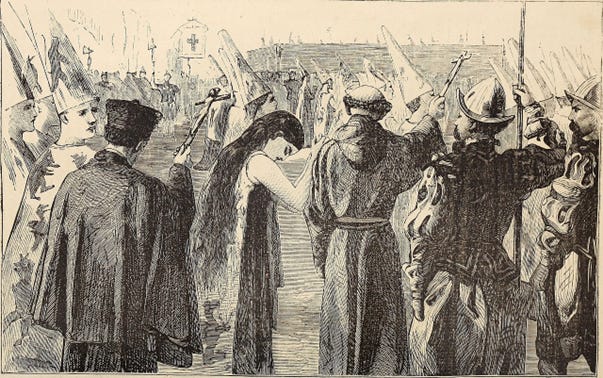
The Dominican Order would play such a central role in the Inquisitions that c. 1495, the painter Pedro Berruguete would be commissioned by the Spanish Inquisition under King Ferdinand II to paint Dominic presiding over an auto da fé.
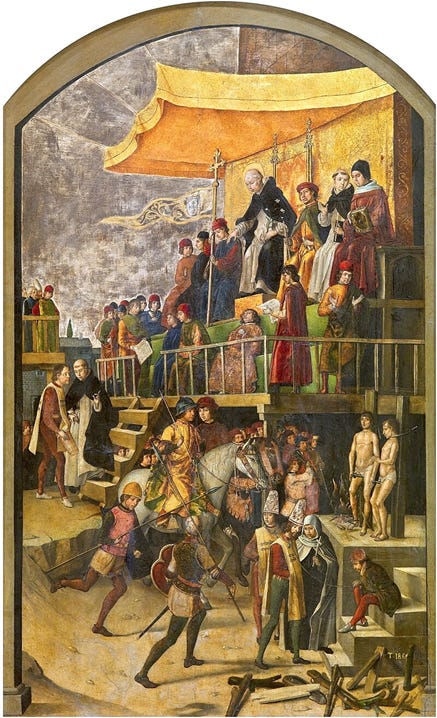
This was a clear move by King Ferdinand II, to which the Spanish Inquisition directly responded to (not the actual Pope), to show Saint Dominic as a symbol of the Spanish Inquisition.
There are those who oddly get very upset with the association of Saint Dominic and the Inquisitions, and even make the claim that this was later used by the Protestants to attack the Catholic Order.
First off, the rather dishonest claim is made that Saint Dominic was not alive during the Inquisition and thus could not have played any role whatsoever in supporting it. It is true Saint Dominic, who died in 1221 was not alive at the beginning of the Papal Inquisition (which began in the 1230s), however, he was very much alive during the Episcopal Inquisition (1184-1230s). The Episcopal Inquisition was established in response to movements considered apostate or heretical to Roman Catholicism, in particular Catharism and Waldensians in Southern France and Northern Italy. This was the first movement of many inquisitions that would follow, including that of the Papal Inquisition.[5]
It is also rather odd as to why supporters of the Dominican Order would be upset with the affiliation of Saint Dominic to the Inquisition, since he had modeled his Catholic Order after the Benedictines, who were responsible for setting up highly influential Crusade orders, including the Templars, and the Spanish Knights of Calatrava (f. 1158) and Knights Alcantara (circa 1158).[6] Thus, not really a far stretch for the Spanish Inquisition, an extension of the Crusader mission, to want Saint Dominic as a symbol.
And lastly it is a rather odd thing for followers of the Dominican Order to get upset about Saint Dominic’s affiliation with the Inquisition since the Dominicans did in fact play a central role as its enforcers, to which no one appears to disagree with. Thus, either these later Dominicans (who began to support the Papal Inquisition in its first year, only ten years after Saint Dominic’s death) were not true followers of Saint Dominic, which calls into question the validity of the entire Dominican Order, or they were true followers of Saint Dominic. In other words, you cannot claim that Saint Dominic would never condone the Inquisition and still be a follower or validate the Dominican Order when the Dominican Order was pretty much established and drew all of its power and influence from centuries of serving the Inquisitions. It is just plain hypocrisy at that point.
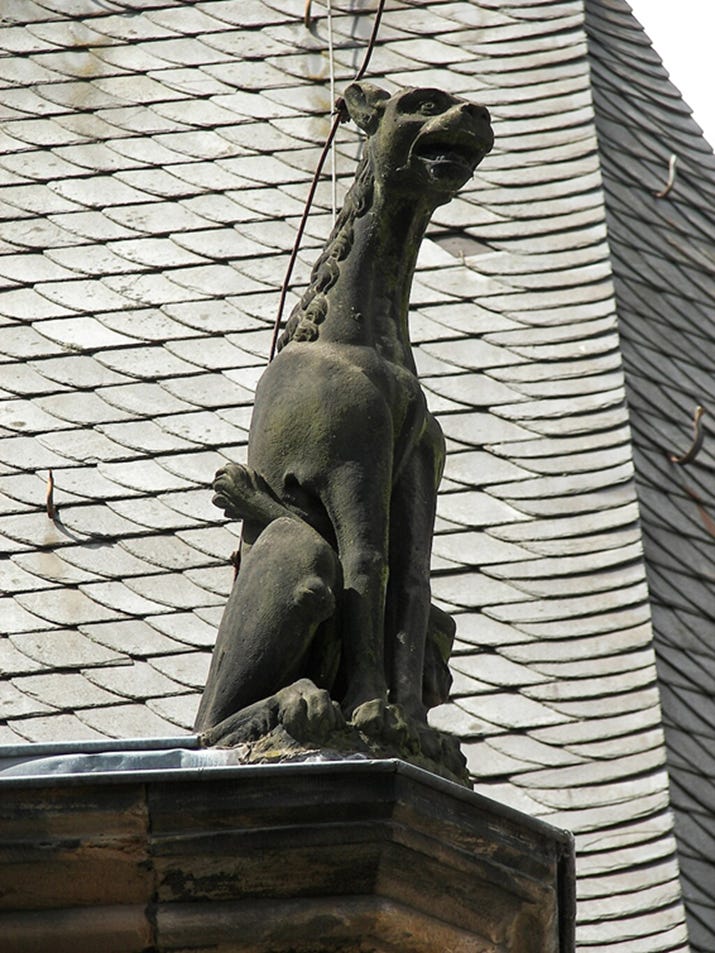
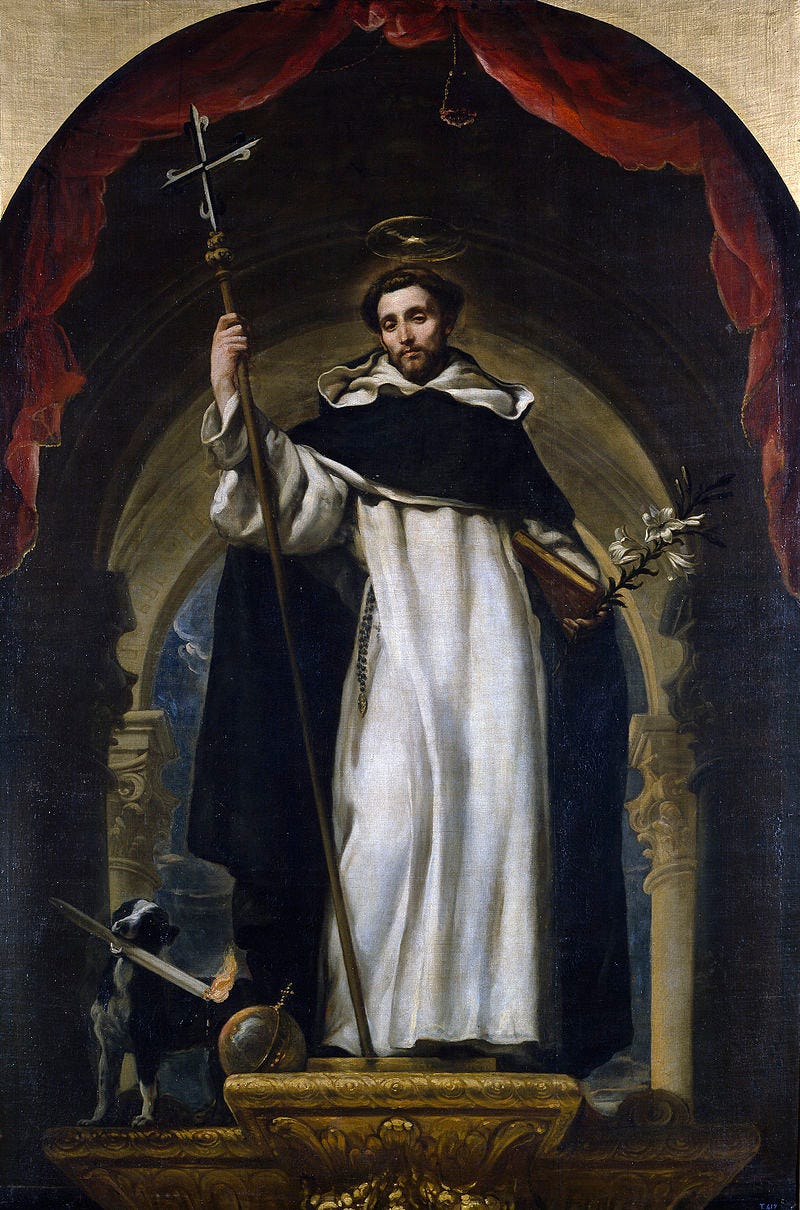
The Dominican Order is also greatly influenced by their brand of Christian mysticism, to which Saint Albertus Magnus (1206-1280) is credited for establishing and whose influence on the brotherhood “permeated nearly every aspect of Dominican life.”[7]
Albertus Magnus, was responsible for introducing the rather dubious teaching that one cannot really know God with Reason and Mind, but rather can only know God through emotion and sensual experiences.
According to the writings of the early Dominicans:
“[W]e affirm things of God only relatively, that is, casually, whereas we deny things of God absolutely, that is, with reference to what He is in Himself. And there is no contradiction between a relative affirmation and an absolute negation. It is not contradictory to say that someone is white-toothed and not white.”[9]
In other words, the Dominicans recognize there is a God, but deny we can know God through Reason and Mind, it is an emotional connection, a “spiritual” connection, and thus “there is no contradiction between a relative affirmation and an absolute negation” if Reason and Mind are not in the picture. It is a question of merely surrendering to a “higher order,” a “higher authority.” Again, very reminiscent to what would later form the foundation of the Jesuit training, who were also modeled off of the Benedictine Order.
According to the vague teachings of the Dominicans, Love is both the cause and result of true understanding and judgement. However, if this is a sensual understanding of Love one can see a myriad of problems waiting ahead, besides the fact that they justified their service to the Inquisitions, which was not very “loving” at the end of the day.
The Dominican Order claimed that through Love one could have an intellectual knowledge of God as well as a spiritual and emotional one. Of course, this sounds all fine in good in its most general, obtuse form, and no doubt there were many who chose to interpret this teaching with a loving morality and a loving reason. However, the Dominican Order makes clear itself that the overall lesson is that one can know that God is, but they cannot know what God is. Rather confusing isn’t it? In other words, this approach has purposefully made itself rife with a wide range of interpretations - and that is the very point.
As with any mystery cult and its initiations, it is all about the “right” interpretation which will decide whether you move to the next “inner ring.”
Thus, the Dominican teachings professed that this sensual, emotion-based contemplation, an eternal contemplation - through Love produces a mystified, imperfect knowledge of God. Mystified, in the sense that this understanding cannot be achieved through Reason, Mind and thus…Judgement.
Of course, there needs to be some “judgement,” otherwise it would not be much of an Order, and there is indeed a hierarchy within the Order, thus again showcasing judgement in those who supposedly know “God’s will” better than others. But, suffice to say, it is not for a lower stationed Dominican to ask any questions as to how such a system of hierarchy and management justifies itself within said Order.
Saint Dominic is also attributed with the introduction of the rosary as a mainstay narrative within the Catholic faith. As the story goes, in 1208 Dominic experienced a vision of the Blessed Virgin Mary in the church at Prouille, France during which she gave him a rosary. This gave rise to the title Our Lady of the Rosary.
The spread of the rosary is attributed to the preaching of the Dominicans.
There are those who deny that it was indeed St. Dominic who introduced the rosary, and that it had existed as a concept that was built up before him. However, whether this is true or not, is not the point for this discussion, since it is merely to discuss the Dominican influence, if not introduction, of the rosary. It is clear, that because the Dominicans are indeed credited with its introduction into the Catholic faith, that they were very influential in shaping the belief system and symbolism of the rosary that continues to this day.
For centuries the rosary has been at the heart of the Dominican Order. Pope Pius XI stated, that the rosary is "the principle and foundation on which the Order of St. Dominic rests for perfecting the lives of its members and obtaining the salvation of others."[10]
One cannot help but think of the Templars in all of this, which I will explain momentarily, and to which should not be surprising since both the Templars and the Dominicans were modeled off of the Benedictine Order and thus share a common source.
Recall in Part I of this series the discussion of Manichaeism and its influence within certain Catholic Orders, including notably the Templars.
C.W. Heckethorn writes in his Secret Societies of All Ages (1875):
“The Origin of Religion of Love. – A Persian slave [Mani], whose powerful imagination brought forth a desolating doctrine, but extraordinary by originality of invention and variety of episodes, three centuries after the appearance of Christ, and when Orientalism was on the point of disappearing from the West, founded a theogony and instituted a sect which revived Eastern influence in Europe, and by means of the Crusades spread schism and revolt throughout the Catholic world.
The action of this rebellious disciple of Zoroaster, of this restorer of the ancient faith of the Magi, mixed with Christian forms and Gnostic symbols, had an extension and duration which, though called in doubt by the past, modern criticism discovers in the intrinsic philosophy of a great part of the sects formed in the bosom of Catholicism.
At the head of this gigantic movement of intelligence and conscience, which devoted itself to the most singular superstitions…Gnosticism and Manichaeism, Oriental sects, the last and glorious advance of a theogony, which, seeing the rule of so large a portion of the earth pass away from itself, undertook to recover it with mysteries and the evocation of poetic phantoms.”
One cannot help wonder if this religion of Love realised by Mani shares a great deal of similarity with that of the Dominicans. According to Heckethorn, Mani had been initiated into the Mithraic mysteries. He writes in his The Secret Societies of All Ages:
“Possessing great penetration and an inflexible will, he [Mani] comprehended the expansive force of Christianity, and resolved to profit thereby, masking Gnostic and Cabalistic ideas under Christian names and rites. In order to establish this Christian revelation, he called himself the Paraclete [the Holy Spirit] announced by Christ to His disciples, attributing to himself, in the Gnostic manner, a great superiority over the Apostles, rejecting the Old Testament, and allowing to the sages of the pagans a philosophy superior to Judaism.
The dismal conceptions of a dualism, pure and simple, the eternity and absolute evil of matter, the non-resurrection of the body, the perpetuity of the principle of evil, — these preside over the compound that took its name from him, and confound Mithras with Christ, the Gospel with the Zend-Avesta, Magism with Judaism. The Unknown Father, the Infinite Being, of Zoroaster, is entirely rejected by Manes [Mani], who divides the universe into two dominions, that of light, and that of darkness, irreconcilable, whereof one is superior to the other ; but, great difference, the first, instead of conquering the latter into goodness, reduces it to impotence, conquers, but does not subdue or convince it.
…
That power is called the " Mother of Life," and is the soul of the world, the "Divine," the primitive thought of the Supreme Ens the heavenly " Sophia" of the Gnostics. As a direct emanation of the Eternal it is too pure to unite with matter, but a son is born unto it, the first man, who initiates the great struggle with the demons. When the strength of the man fails him, the "Living Spirit " comes to his assistance, and, having led him back to the kingdom of light, raises above the world that part of the celestial soul not contaminated by contact with the demons — a perfectly pure soul, the Redeemer, the Christ, who attracts to Himself and frees from matter the light and soul of the first man. In these abstruse doctrines lies concealed the Mithraic worship of the sun.
The followers of Manes were divided into " Elect " and " Listeners ; " the former had to renounce every corporeal enjoyment, everything that can darken the celestial light in us ; the second were less vigorously treated.”
Heckethorn goes on to write that these Manichean teachings were incorporated into the Catholic Church but those who truly “understood” the gnostic veil would be considered among the “elect.” This is in fact what Saint Augustine was so openly battling against. [See Part I of this series for more on this.]
Heckethorn makes the point that the Templars are a continuation of the Manichean teachings, and that their specific brand of “Christianity” focuses on a more gnostic interpretation.
Heckethorn writes in his Secret Societies of All Ages:[11]
“The Temple and the Church. — The very name may in a certain manner point to a rebellious ambition. Temple is a more august, a vaster and more comprehensive denomination than that of Church. The Temple is above the Church ; this latter has a date of its foundation, a local habitation ; the former has always existed. Churches fall ; the Temple remains as a symbol of the parentage of religions, and the perpetuity of their spirit. The Templars might thus consider themselves as the priests of that religion, not transitory, but permanent; and the aspirants could believe that the Order constituting them the defenders of the Temple, intended to initiate them into a second and better Christianity, into a purer religion. Whilst the Temple meant for the Christian the Holy Sepulchre, it recalled to the Mussulman the Temple of Solomon; and the legend which referred to this latter served as a bond to the rituals of the Freemasons and other secret societies.
In another sense, the Church may be called the house of Christ ; but the Temple is the house of the Holy Spirit. It is that religion of the Spirit which the Templars inherited from the Manichaeans, from the Albigenses, from the sectarian chivalry that had preceded them. Defenders of the Sepulchre of Christ, they remained faithful to their trust, but considered that He had come on earth only to preach in the name of the Eternal Spirit, to whom their principal worship was addressed ; and, like the Gnostics and Manichaeans, they celebrated Pentecost rather than Easter, because in the former the Divine Spirit itself had descended and spread itself over the face of the earth. This, in a certain sense, was an amplification, and in another a denial, of the Catholic dogma. The Holy Spirit is the universal conscience.”
Heckethorn continues:[12]
“We have seen that the Templars, during and in consequence of their sojourn in the East, attached themselves to the doctrines of the Gnostics and Manichaeans, — as is sufficiently attested, were other proofs wanting, by the Gnostic and cabalistic symbols discovered in and on the tombs of Knights Templars, — which appeared to them less perverted than those of the priests of Rome… The Templars…came to the conclusion that all these gods, descended from the same origin, were only religious and poetic figures of the sun [author’s note: clear Mithraic influence here] ; and, seeing the bad use made of the doctrines connected therewith by the clergy, they renounced St. Peter, and became Johannites, or followers of St. John. There was thus a secret schism, and according to some writers, it was this, together with the opposition to Roman Catholicism which it implied, as well as their great wealth, which was among the causes of their condemnation by the court of Rome.”
A Johannite refers to the gnostic following of St. John. The Knights of the Order of St John rooted themselves in the gnostic gospel dubbed The Secret Book of John and featured this gnostic St John as the patron saint of the order. In The Secret Book of John, we find a famous creation myth outlining the origins of material reality and addressing how evil was created from the mind of a demiurge named Yaldabaoth. In this strange myth, the gnostic book of St John (based on the supposed secret teachings of Jesus), it is explained that the created world was fundamentally evil, and that the creator god of the old testament was actually an evil being named “Yaldabaoth”.
In addition, the Templar Order (Poor Knights of Solomon’s Temple) had as their patron saint, Mary Magdalene, who was also featured in the gnostic scriptures as the supposed author of the Gospel of Mary Magdalene. In this gospel, written around the same period of the 2nd century, as was The Secret Book of John, Mary Magdalene is treated as Jesus’ lover and favorite disciple upon whom another ‘secret teaching’ was bestowed.
Thus, the Templar Order had for its “listeners” the view that the Templar Order was indeed a Catholic Knights Order who followed St. John, as well as Mary Magdalene as their patroness. However, for its “elects” the true teachings were understood to be the gnostic gospels of St. John and Mary Magdalene.
This theory is further confirmed by Pierre Mollier in his paper “Malta, the Knights, and Freemasonry. Ritual, Secrecy, and Civil Society” where he writes:
“…[a] more subtle and even more mysterious motive further explains the presence of knights [Hospitaller of St. John of Jerusalem] in [the Malta Freemasonry] Lodges: some showed a clear interest in Christian esotericism. We will not retrace the relations between Loras and Cagliostro here. However, it is also unusual to observe the relative over-representation of the Maltese in Lodges professing the Rectified Scottish Rite: Chefdebien in Narbonne, Aigrefeuille in Montpellier then in Paris, du Bourg and Guibertin Toulouse, La Croix de Sayve in Grenoble, Monspey in Lyon…
Yet the Rectified Scottish Rite and its Order of Benevolent Knights of the Holy City saw themselves as restoring true chivalry in service of the most essential mysteries of Christianity. Its structures were those of an Order of chivalry. Its ceremonies and its instructions were meant to explain the relationships between God, men, and the universe by the mediation of Jesus Christ and intermediary spirits. The Knights of Malta therefore practiced a very distinctive type of Masonry.”[13]
[Recall in Part I of this series, that the Malta Freemasonry (among the first Lodges established among Modern Freemasonry) was not only made up mostly of the Crusader Knights of St John of Jerusalem but also Catholic priests, and that the Maltese Freemasonry followed the French Rite in Freemasonry.]
One cannot help but wonder if the Dominicans shared such an interpretation with the Templars and Hospitaller Knights of St. John of Jerusalem in their choosing of Mary Magdalene as one of the three of their patron saints, the others being Saint Dominic and Catherine of Siena.
This also calls into question the significance of the Rosary and the reference to Mary as the symbol of the Rosary, is it the Virgin Mary or Mary Magdalene that is truly being invoked as the “spiritual” connection amongst the “elect” within the Dominican Order, or the Catholic Church more broadly?
This is further called into question when we see that the Dominican spiritual teachings of Albertus Magnus were central to the development of Rosicrucianism. Albertus Magnus was alive from 1200 to 1280, and had become a member of the Dominican Order by the 1220s, it appears after the death of Saint Dominic. It may have been Albertus Magnus himself, who was responsible for introducing the Dominican brand of Christian mysticism, to have also formed the Dominican tradition around the rosary. This calls into question the meaning and origin of the Rosary within the Dominican Order, as well as the French Modern Rite, an odd blend of Catholicism and Freemasonry, who has as its last of the seven degrees the “Rose Croix” initiation.
Recall from Part IV of this series, the discussion of how French Modern Freemasonry developed (tightly linked with the emergence of the Modern Templars), and that around this, all kinds of mythologies developed about the Emperor Napoleon. “The most significant one was a sun cult: the sun of the Battle of Austerlitz was never going to set, and Napoleon was going to follow it toward the east, to become the Emperor of the Two Worlds. Remember that Louis XIV had established a similar cult; he was called the "Sun King," and had built a "Temple of Apollo" next to the Versailles Palace, on the model of Tiberius' temple at Capri - a direct challenge to Christianity. There is, indeed, something weird and rotten in the kingdom of France.”[14]
Again the sun theme emerges. We also see it in the Scottish Rite who would have their Knights of the Sun. [14a]
Again, recall in Part IV of this series that King Louis XIV called himself the “Sun King” and would reintroduce the Modern Templars into France and thus it is very telling that King Louis XIV would want to model his “Temple of Apollo” off of Tiberius’ temple at Capri.[15] And the Isle of Capri was a hotbed of Mithraic and Cybelian cults built up by Emperor Tiberius and maintained as a mystery cult headquarters to this day.
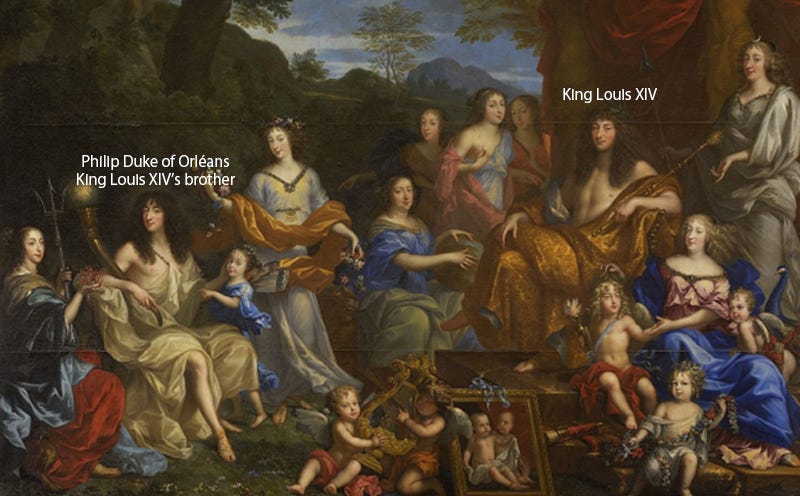
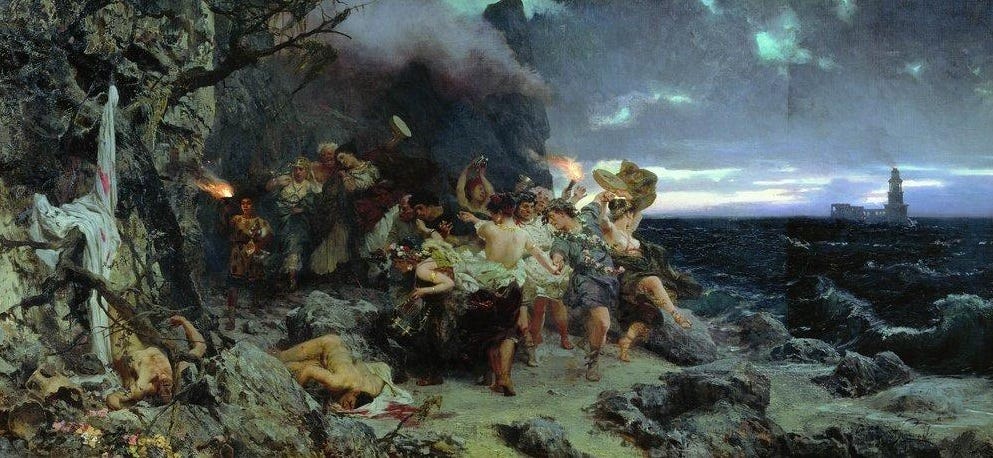
Matthew Ehret writes in his upcoming paper “The Apennine Sibyl: Epicenter of World Occultism”:
“..the Isle of Capri (off the coast of Amalfi, Italy)…was given over to the Benedictine Order in the 5th century and which housed both the vast caves of Mithra, and temples of Cybele where Emperor Tiberius (the uncle in law of Pilate) hosted his orgiastic rituals fusing the sexual frenzy of Dionysius and Bachus at night mixed with Apollonian rituals of the Solar Deity by day.”
There is not really much left to the imagination of what the self-dubbed “Sun King,” King Louis XIV, had in mind in his inspiration from Tiberius for his own Apollo Temple, which again is tied in with the Benedictine Order who were directly implicated with the Capri mystery cults (since they continued under Benedictine control) as well as the Knights of Malta from Amalfi who were founded by the Benedictine monk Blessed Gerard. And recall, it was King Louis XIV who would bring back the Modern Templars under the newly founded Scottish French Rite.
There is something most definitely “weird and rotten in the Kingdom of France.”
*********************************************************************
The Dominican Order is a French Catholic order. Their first base was established in Paris in 1218 under the leadership of Pierre Seilhan (or Seila) in the Chapelle Saint-Jacques, on the street of Saint-Jacques - this is why the Dominicans were called Jacobins in Paris.[17]
Yes, you read right, it was the Dominicans who were first referred to as Jacobins in Paris.
When the Jacobins of the French Revolution would be burgeoning as a new “club” - to accommodate growing membership, the group rented for its meetings the refectory of the Dominican monastery of the “Jacobins” in the Rue Saint-Honoré, adjacent to the seat of the Assembly.[18]
This is highly unusual and suspect to say the least. For the Dominicans to rent out one of their monasteries, not to mention, the very monastery that was their origin and base in France is a decision that had to be passed at the highest level of the powerful and influential order.
For the Catholic Dominican Order to rent their base to the burgeoning Jacobins, who did not seem like friends to the Catholic Church and its institutions, was a most strange decision indeed.
And it appears that the relationship did not stop at the Jacobins of the French Revolution merely renting a building from the Dominicans, since again most strangely, they decided to adopt the very name of the Dominicans in reference to their society.
Although there are apologists out there who try to claim that the nickname “Jacobins” was given by their opposition, since at the time it was well known to be in reference to the French Dominicans, and thus was no secret - this does not quite pan out as solid reasoning since the Jacobins themselves would promote their name as the Society of the Jacobins, Friends of Freedom and Equality, and after 1792, commonly referred to themselves as simply the Jacobin Club. Thus, it is clear, the Jacobins very much wished to be referred to in reference to the Dominican Order.
The Jacobins of the French Revolution would also use the former headquarters and fortress of the Templars as their prison during the Reign of Terror where many gruesome tortures were no doubt committed.
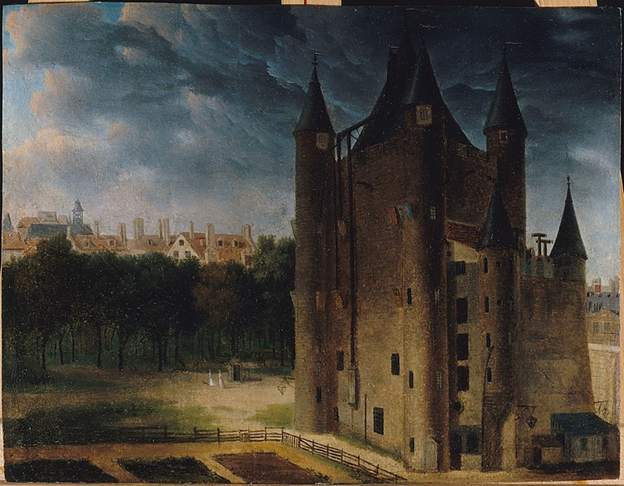
One cannot help but wonder how similar the Reign of Terror was to the Inquisitions, all the more interesting when we know where the origin of the name Jacobin comes from and the central role the Dominicans played in said Inquisitions...
Recall the quote from Pierre Mollier where he writes in his paper “Malta, the Knights, and Freemasonry. Ritual, Secrecy, and Civil Society”:
“…[a] more subtle and even more mysterious motive further explains the presence of knights [Hospitaller of St. John of Jerusalem] in [the Malta Freemasonry] Lodges: some showed a clear interest in Christian esotericism. We will not retrace the relations between Loras and Cagliostro here. However, it is also unusual to observe the relative over-representation of the Maltese in Lodges professing the Rectified Scottish Rite: Chefdebien in Narbonne, Aigrefeuille in Montpellier then in Paris, du Bourg and Guibertin Toulouse, La Croix de Sayve in Grenoble, Monspey in Lyon…”
Thus, the “over-representation of Maltese Lodges” who “profess[ed] the Rectified Scottish Rite” had a heavy presence in Narbonne, Montpellier, Paris, Toulouse, Grenoble and Lyon - all French cities.
Recall in Part I of this series that one of the Knights of Malta, Formosa de Fremeaux, a Maltese nobleman who was the Dutch Consolate - was an influential and powerful supporter of the Jacobins as well as the French occupation of Malta.
Pierre Mollier continues:
“Yet the Rectified Scottish Rite and its Order of Benevolent Knights of the Holy City saw themselves as restoring true chivalry in service of the most essential mysteries of Christianity. Its structures were those of an Order of chivalry. Its ceremonies and its instructions were meant to explain the relationships between God, men, and the universe by the mediation of Jesus Christ and intermediary spirits. The Knights of Malta therefore practiced a very distinctive type of Masonry.”[19]
Thus, the Jacobins would strangely be tied to the Dominican Order, as well as the Templars, Knights of St John of Jerusalem (aka Knights of Malta) and the Maltese Scottish Rite Freemasonic Lodges - and thus spirits of ghosts past of the Crusades and the Inquisitions - in how they would gain power and influence during their Reign of Terror that ended the French Revolution.
.
Refer here for Part VI “The British Origins of the Jacobins, Mafia Godfather Mazzini and the Rise of the Young Europe Cults”
Cynthia Chung is the President of the Rising Tide Foundation and author of the books “The Shaping of a World Religion” & “The Empire on Which the Black Sun Never Set,” consider supporting her work by making a donation and subscribing to her substack page Through A Glass Darkly.
Also make sure to watch our RTF and CP films and documentaries here.
Footnotes:
[1] https://en.wikipedia.org/wiki/Dominican_Order
[2] https://en.wikipedia.org/wiki/Saint_Dominic
[3] https://en.wikipedia.org/wiki/Auto-da-f%C3%A9
[4] https://en.wikipedia.org/wiki/Auto-da-f%C3%A9
[5] https://en.wikipedia.org/wiki/Medieval_Inquisition
Mazzini as the one and only Godfather to the Sicilian Mafia
“Spanish kings ruled Naples and Sicily from 1504 to 1707 and from 1738 to 1860. In the first Spanish reign, a criminal society was founded in Naples called the ‘camorra,’ a Spanish word meaning ‘fight’ or ‘quarrel.’ The infant Camorra was a direct offshoot of the Garduna, and very probably was composed of Spanish Gardunists and native Neapolitians.*
[7] https://en.wikipedia.org/wiki/Dominican_Order#cite_note-DC-2
[8] https://en.wikipedia.org/wiki/Dominican_Order#cite_note-DC-2
[9] Writing of an early Dominican. Tugwell, Simon. Early Dominicans: Selected Writings 1982). Pg. 153
[10] History of the Dominicans (2014) Dominican Shrine of St. Jude, New Priory Press
[11] C.W. Heckethorn. Secret Societies of All Ages (1875). pg. 190
[12] Ibid. pg. 193-194
[13] Pierre Mollier. Malta, the Knights, and Freemasonry. Ritual, Secrecy, and Civil Society. Volume 2, Issue 1, Spring 2014.
[14] https://larouchepub.com/eiw/public/1996/eirv23n42-19961018/eirv23n42-19961018_018-time_to_destroy_the_mythology_of.pdf
The Birth of the Modern Templars, the Origins of the Ancient Scottish Rite and the Roman Sun King Napoleon
Before we discuss the role of Giuseppe Mazzini in creating the Sicilian Mafia which will be published next week, it is essential that we first have some orientation in our understanding of the French Revolution as what could have been a true liberation of the French people from tyrannical rulers and how it was sabotaged, namely by the Jacobin terrorists, a network that would have its ties with the Knights of Malta and Malta Freemasonry, and how this Jacobin cause was used throughout the 19th century to in fact undo any genuine movement towards true republicanism, liberty and unification, as in the fight for the unification of Italy that Mazzini supposedly fought so hard to bring about.
[15] Ibid.
The French Connection: The Knights of Malta, the Scottish Rite & the Rise of the Mafia Brotherhoods
This story will discuss the Knights of Malta link to the birth of the Italian and French Mafia Brotherhoods, as well as the Mafia Brotherhoods link to the Scottish Rite and Mazzini networks, and how these were ultimately in service to what would become known as the Gladio apparatus in the 20
[17] https://en.wikipedia.org/wiki/Rue_Saint-Jacques,_Paris
[18] Alpaugh, Micah (2014). "The British Origins of the French Jacobins: Radical Sociability and the Development of Political Club Networks"
[19] Pierre Mollier. Malta, the Knights, and Freemasonry. Ritual, Secrecy, and Civil Society. Volume 2, Issue 1, Spring 2014.


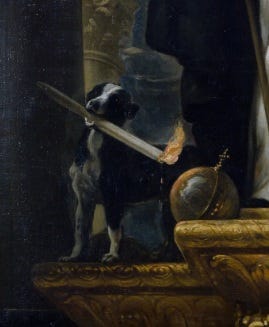
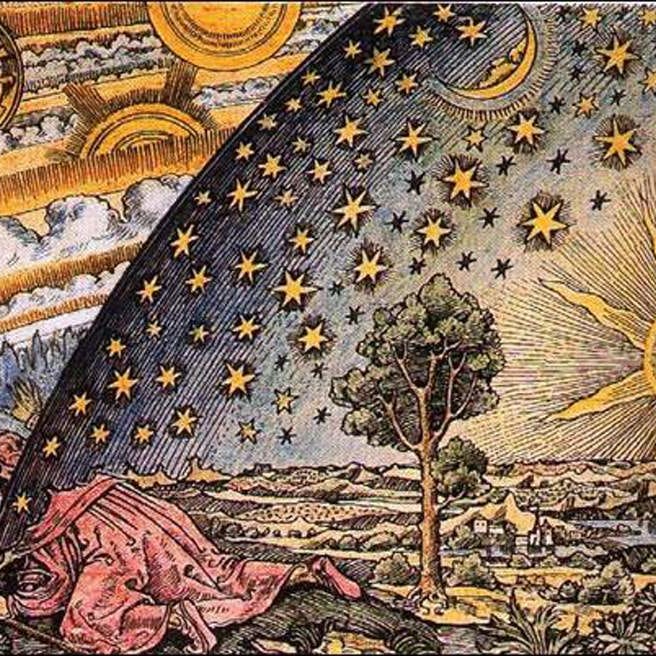

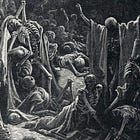




Thank you for your response. However, as the author pointed out, the Rosary came into existence over several hundred years and authorship cannot (with 100% accuracy) be attributed just to one person. The Rosary itself is not a magic gnostic talisman. The article that I posted correctly explains the theological purpose "Journeying through the Joyful, Sorrowful and Glorious mysteries of the rosary, the individual brings to mind our Lord's incarnation, His passion and death and His resurrection from the dead. In so doing, the rosary assists us in growing in a deeper appreciation of these mysteries, in uniting our life more closely to our Lord and in imploring His graced assistance to live the faith." Obviously one can disagree but that is official Catholic teaching anything else is speculation that does not conform with what is taught. I am not privy to secret meanings or knowledge but if you have or understand those meanings, I would like to read what the prayers that one uses for the Rosary really mean. As for your comment on the two versions of "mystery religion" (I assume you are referring to Catholicism). I find your explanation to be one of philosophical dualism, which is perfectly fine position to have, maintaining that their are elects and listeners within the Catholic Church. Therefore, I assume that you might be implying (my interpretation of your article) that Catholic sacraments and dogmas are not really related to what Jesus Christ really taught (a Protestant and Jewish position). This is perfectly fine belief to have but then this enters an early Apostolic and Church Father argument (their interpretation of scripture), which supports the Catholic position. Evidently, you (like everyone else) have your own beliefs and have every right to them but your interpretation of history has a subjective component that is obviously anti-Catholic to fit your narrative (I do not know what that narrative maybe). I do wish you all the best on your journey.
All the best and good luck.
Salvador P. Barragan
I did not know that when Catholics pray the rosary that they were praying to Mary Magdalene. But the following article provides a different perspective.
HISTORY OF THE ROSARY
Fr. William Saunders
Please explain the history and background of the rosary. Is it true that the Blessed Mother gave it to St. Dominic?
The rosary is one of the most cherished prayers of our Catholic Church. Introduced by the Creed, the Our Father, three Hail Marys and the Doxology ("Glory Be"), and concluded with the Salve Regina, the rosary involves the recitation of five decades consisting of the Our Father, 10 Hail Marys and the Doxology. During this recitation, the individual meditates on the saving mysteries of our Lord's life and the faithful witness of our Blessed Mother.
Journeying through the Joyful, Sorrowful and Glorious mysteries of the rosary, the individual brings to mind our Lord's incarnation, His passion and death and His resurrection from the dead. In so doing, the rosary assists us in growing in a deeper appreciation of these mysteries, in uniting our life more closely to our Lord and in imploring His graced assistance to live the faith. We also ask for the prayers of our Blessed Mother, who leads all believers to her Son.
The origins of the rosary are "sketchy" at best. The use of "prayer beads" and the repeated recitation of prayers to aid in meditation stem from the earliest days of the Church and has roots in pre-Christian times. Evidence exists from the Middle Ages that strings of beads were used to count Our Fathers and Hail Marys. Actually, these strings of beads became known as "Paternosters," the Latin for "Our Father."
The structure of the rosary gradually evolved between the 12th and 15th centuries. Eventually 50 Hail Marys were recited and linked with verses of psalms or other phrases evoking the lives of Jesus and Mary. During this time, this prayer form became known as the rosarium ("rose garden"), actually a common term to designate a collection of similar material, such as an anthology of stories on the same subject or theme. During the 16th century, the structure of the five-decade rosary based on the three sets of mysteries prevailed.
Tradition does hold that St. Dominic (d. 1221) devised the rosary as we know it. Moved by a vision of our Blessed Mother, he preached the use of the rosary in his missionary work among the Albigensians, who had denied the mystery of Christ. Some scholars take exception to St. Dominic's role in forming the rosary. The earliest accounts of his life do not mention it, the Dominican constitutions do not link him with it and contemporaneous portraits do not include it as a symbol to identify the saint.
In 1922, Dom Louis Cougaud stated, "The various elements which enter into the composition of that Catholic devotion commonly called the rosary are the product of a long and gradual development which began before St. Dominic's time, which continued without his having any share in it, and which only attained its final shape several centuries after his death." However, other scholars would rebut that St. Dominic not so much "invented" the rosary as he preached its use to convert sinners and those who had strayed from the faith. Moreover, at least a dozen popes have mentioned St. Dominic's connection with the rosary, sanctioning his role as at least a "pious belief."
The rosary gained greater popularity in the 1500s, when Moslem Turks were ravaging Eastern Europe. Recall that in 1453, Constantinople had fallen to the Moslems, leaving the Balkans and Hungary open to conquest. With Moslems raiding even the coast of Italy, the control of the Mediterranean was now at stake.
In 1571, Pope Pius V organized a fleet under the command of Don Juan of Austria the half-brother of King Philip II of Spain. While preparations were underway, the Holy Father asked all of the faithful to say the rosary and implore our Blessed Mother's prayers, under the title Our Lady of Victory, that our Lord would grant victory to the Christians. Although the Moslem fleet outnumbered that of the Christians in both vessels and sailors, the forces were ready to meet in battle. The Christian flagship flew a blue banner depicting Christ crucified. On October 7, 1571, the Moslems were defeated at the Battle of Lepanto. The following year, Pope St. Pius V established the Feast of the Holy Rosary on October 7, where the faithful would not only remember this victory, but also give thanks to the Lord for all of His benefits and remember the powerful intercession of our Blessed Mother.
The fact that our Church continues to include the Feast of the Holy Rosary on the liturgical calendar testifies to the importance and goodness of this form of prayer. Archbishop Fulton Sheen said, "The rosary is the book of the blind, where souls see and there enact the greatest drama of love the world has ever known; it is the book of the simple, which initiates them into mysteries and knowledge more satisfying than the education of other men; it is the book of the aged, whose eyes close upon the shadow of this world, and open on the substance of the next. The power of the rosary is beyond description."
Fr. Saunders is president of the Notre Dame Institute and associate pastor of Queen of Apostles Parish, both in Alexandria.
This article appeared in the October 6, 1994 issue of "The Arlington Catholic Herald." Courtesy of the "Arlington Catholic Herald" diocesan newspaper of the Arlington (VA) diocese. For subscription information, call 1-800-377-0511 or write 200 North Glebe Road, Suite 607 Arlington, VA 22203.
RESOURCES
MEDIA BLOGS EMPLOYMENT MEDIA MISSIONARIES
CONTACT
EWTN | 5817 Old Leeds Rd. | Irondale, AL 35210 | 1-800-447-3986 | VIEWER@EWTN.COM
CONNECT
facebook sharing button twitter sharing button email sharing button copy sharing button
Copyright © 2024 Eternal Word Television Network, Inc. Irondale, Alabama. All rights reserved.
EIN: 63-0801391